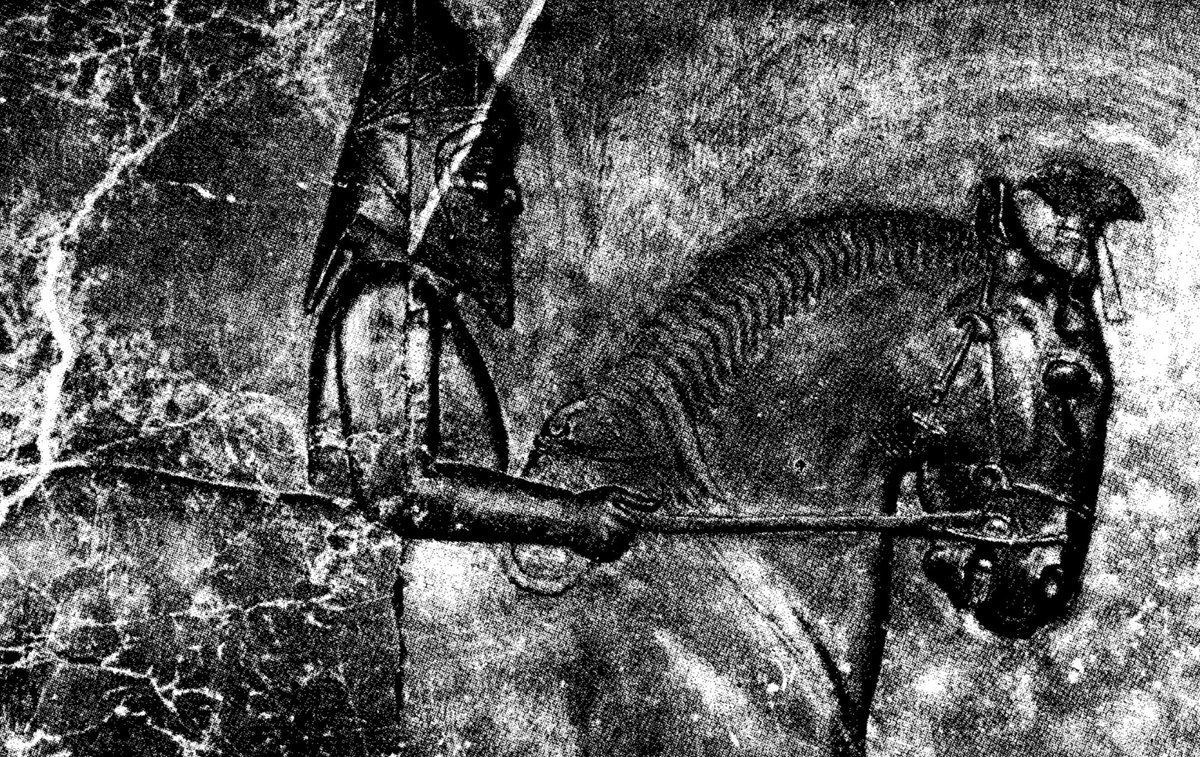As difficult as it may be to believe, my tweets go through a (minimal) filter before they see the light of day.
To prove it, here are some which didn’t make the cut last time round.
#ChiasticClaimsToCome
#AndManyWordReversals
It begins and ends in a roughly symmetrical manner,
and its central plot--i.e., the rivalry between Haman and the Jews--reaches its climax in the events of ch. 6 (about halfway through the book),
Consider, by way of illustration, the observations set out below:
:: Esther starts and ends with a summons to observe two (consecutive) feasts.
The first is empire-wide, while the second is restricted to Susa
:: Later, the king gives ‘gifts’ (מנות) to his people (on the day of Esther’s coronation), which finds a parallel in the ‘gifts’ (מנות) shared among the Jews at the time of Purim (cp. 2.18 w. 9.22).
:: Midway through the book (in ch. 6), a dramatic reversal takes place:
Haman *thinks* he is about to be honoured
but instead finds himself forced to honour Mordecai--the very man who first aroused his wrath because he refused to bow down before him!
The event in question is flanked either side by a feast (chs. 5 and 7 respectively).
:: Then, after Haman’s fall, the king removes his signet ring from the hand of Haman and awards it to Mordecai,
who uses it to countermand the decrees Haman sealed with it (3.10, 12, 8.2, 10).
More specifically, the reversal narrated in ch. 6 functions as a pivotal moment--a watershed in Haman’s career, from which point on his plans gradually unwind.
The text of Scripture has a complexity which transcends rigid structures.
Furthermore, many things occur *between* the lines of our chiasmus,
For instance, chs. 1-2 and chs. 8-9 narrate a number of similar incidents--e.g., feasts, executions, holidays, fire which must be fought with fire
Meanwhile, Esther’s initial appearance before the king is oddly reminiscient of the incident described in ch. 6,
:: Both Esther and Mordecai are ‘paraded’ in public (or at least before many people) and admired by those who see them;
:: both Esther and Mordecai are (temporarily) given royal gifts to take with them
:: both Esther and Mordecai are subsequently returned to their place (or thereabouts), where they must await further word from the king.
Furthermore, the two events are described by means of a similar grammatical structure,
where X = a C-stem juss. (וְיַפְקֵד and יָבִיאוּ respectively), and Y opens with the form וְנָתוֹן (cp. 2.3b w. 6.8-9).
The correspondence between these two incidents, however,
Our chiasmus should not, therefore, be seen as *the* sole structure of the book of Esther, but as a particular undercurrent at work within it,
Viewed as such, our chiasmus seems both valid and helpful for at least a couple of reasons.
which coheres with our (chiastic) designation of ch. 6a as a watershed.
It explicitly spells out how--on the very day when the Jews’ enemies sought to ‘gain the mastery’ over them (שלט)--the situation was reversed (הפך)
how Haman’s plans were ‘turned back’ (שוב) on his own head (9.25),
and how a time of sorrow was hence ‘turned’ (הפך) into a time of gladness (9.22).
since Haman is initially forced to honour Mordecai in the manner he chose out for himself (i.e., a royal parade),
and is subsequently dishonoured (and killed)
It therefore seems apt for chs. 3-8 to form a chiasmus where Haman’s actions in chs. 3-5 are unwound in chs. 7-8 in the aftermath of ch. 6’s pivotal events.
Other contact-points between Esther and the flood narrative include lexical parallels between the ‘machinations’ (-מחשב) of Haman and those of the pre-flood-world’s inhabitants,
at which point a fear/dread of God’s representatives descends on a previously hostile world (cp. 9.2, Gen. 9.2).
Either way, the ‘reversal’ (הפך) outlined in the chiasmus above is clearly an important undercurrent
The same theme of reversal is brought out elsewhere, though in more subtle ways,
such as the way in which a number of the book’s key terms are rearranged/reworked in the book’s final chapters:
such as the way in which a number of the book’s key terms are rearranged/reworked in the book’s final chapters:
:: the decree sent out with ‘haste’ (דחף) by Haman is blunted by the Persians’ ‘fear’ (פחד) of Mordecai (3.15, 9.1); and
:: Meanwhile, the ‘relief’ (רֶוַח) sought by Mordecai is attained in ch. 8 when Mordecai goes forth clad in ‘linen’ (חור);
:: those who ‘hate’ the Jews (שנא) begin to assist (נשא) them (9.1, 3).
:: the ‘disdain’ (בזה) shown by Haman leads the Jews to (be able to) ‘plunder’ (בִּזָּה) their enemies (cp. 3.6, 9.10ff.); and
As such, the reversal described in Esther’s main storyline is embedded in Esther’s vocabulary.
But enough of literary structures and the like.
Esther contains a number of turns of phrase which anticipate what happens next in the story.
For instance:
:: Soon afterwards, a royal advisor named Marsena (מרסנא) is asked how to handle Vashti’s behaviour,
:: And Vashti is then judged by her own words, which anticipates the way *Haman* will ultimately be judged.
:: Similar ‘anticipation’ appears to be present in chs. 5-7.
which is notable since one would expect the king to say תנתן לך (since the antecedent noun בקשה = ‘request’ is fem., hence the king elsewhere says, מה בקשתך...ותעש).
The exchange described in 7.2-3 (at Esther’s second feast) works in the same way.
The king’s promise to Esther--ותנתן לך--anticipates a fem. answer,
As can be seen, then, Esther’s storyline subtly hints at what is about to come, though of course it remains a mystery to its characters.
which makes Esther an intricate and engaging story.
For a start, Esther’s *syntax* is full of couplets.
One commentator has identified over twenty syntactic couplets in ch. 1 alone,
Couplets of *people* are also prominent insofar as the book revolves around relationships which develop between particular pairs of people,
All of the relationships have their own particular means of interaction and power dynamics,
which adds colour and variety to our story.
These scenes unfold simultaneously, and are juxtaposed for maximum dramatic effect.
:: After Haman’s fatal decree is issued, chaos erupts in the city, while Haman and the king sit down...
:: Soon afterwards, the Jews in Susa fast for three days while the Jews elsewhere (presumably) celebrate and observe the Passover. (The events of 4.16 seem to take place on 14th to 16th Nisan: cp. 3.12.)
:: Later, as the king seethes with rage outside, Haman ‘falls’ before Esther, which is the fulness of his (down)fall.
:: A few days later, on 14th Adar, those in Susa fight, while those in Susa feast.
Connected to these ‘dual scenes’ are an array of ‘dual instances’ of particular things/people.
For instance:
When Vashti refuses to obey the king’s command, she is banished, but, when Mordecai does so, it turns out to his good.
And, when Haman falls at the feet of a member of royalty, his action leads to his death, but, when Vashti does so, it leads to life.
on the contrary, they are central to its major theme,
for, as we have seen, the whole story of Esther is a repeat of a previous incident.
and, happily, it is one where things turn out very differently.
As such, the high-level message of the book of Esther is echoed at a lower, more detailed level,
When you have God on your side, to repeat the same action and expect a different result is not necessarily insanity.
As can be seen, then, Esther is a narrative of great intricacy and craftsmanship, which can be analysed in multiple ways.
Contrary to the impression often given, none of these analyses provide *the* unique key to unlock Esther’s text.
and, since Scripture records the events of history, the Bible is a complex book.
which surpasses the capabilities of any one commentator,
and is why God has left the exposition of Scripture as a task for the Church as a whole.
The end.









